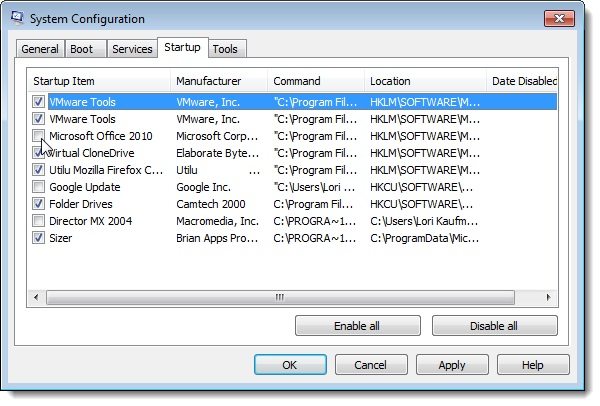
#What programs running on startup install#
At this point, you may simply close the Registry Editor.The more programs you install on Windows, the more susceptible it is to a long load, ‘hangs’, and possibly various crashes. Changes to the registry are implemented immediately, so you do not need to save your changes.Remember that deleting programs here does not remove them from your computer it only stops them from running automatically. Highlight any program(s) you want to prevent from starting automatically, and then press the Del key.You'll need to ascertain what is needed and what is not. There also may be undesirable or unnecessary programs, such as spyware and advertisement software. Some of these may be important programs, such as antivirus programs or firewalls. On the right side of the screen, you will see programs that are set to run on startup that might not be included in the Startup folder. Then expand Microsoft, then Windows, and then CurrentVersion. To expand HKEY LOCAL MACHINE, click the + (plus sign) to the left.This will make a backup of a working registry.


#What programs running on startup windows#
If you make any error while editing the registry, you can potentially cause Windows to fail or be unable to boot, requiring you to reinstall Windows. This contains instructions for editing the registry. Select the item not to launch at startup, and click Disable.If necessary, click More details to see all of the tabs select the Startup tab.To disable an app, toggle the switch to Off. The window that opens will contain a list of applications that may start when your device boots.In the Windows search box, type startup apps (Windows 11) or startup tasks (Windows 10), and press Enter.If you are unfamiliar or uncomfortable with registry editing, use these utilities. Otherwise, they are only accessible through the registry. You can disable these with either the Startup apps/tasks tool in Settings or the Task Manager. Some startup items have no shortcut in the Startup folder. If it does not, enter the accurate path to the program. In the "Target:" field, verify that the path statement points to the filename of the correct program. In the Startup folder, right-click the appropriate icon and select Properties.If a shortcut you want in the Startup folder is pointing to the wrong program, correct it as follows: Right-click the program you don't want to open at startup and click Delete.In the "Open:" field, type:Ĭ:\ProgramData\Microsoft\Windows\Start Menu\Programs\StartUp To remove a shortcut from the Startup folder:

The shortcut will remain in the Recycle Bin until you empty it.


 0 kommentar(er)
0 kommentar(er)
